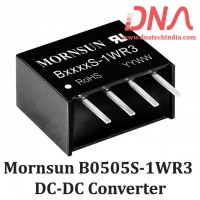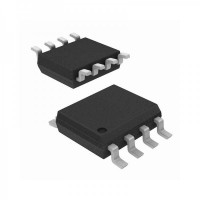Resistor Power Rating |
||||||||||||||||
|
When an electrical current passes through a resistor, electrical energy is lost by the resistor in the form of heat and the greater this current flow the hotter the resistor will get. This is known as the Resistor Power Rating. Resistors are rated by the value of their resistance and the power in watts that they can safely dissipate based mainly upon their size. Every resistor has a maximum power rating which is determined by its physical size as generally, the greater its surface area the more power it can dissipate safely into the ambient air or into a heatsink. |
||||||||||||||||
|
A resistor can be used at any combination of voltage (within reason) and current so long as its "Dissipating Power Rating" is not exceeded with the resistor power rating indicating how much power the resistor can convert into heat or absorb without any damage to itself. The Resistor Power Rating is sometimes called the Resistors Wattage Rating and is defined as the amount of heat that a resistive element can dissipate for an indefinite period of time without degrading its performance. The power rating of resistors varies a lot from less than one tenth of a watt to many hundreds of watts depending upon its size, construction and ambient operating temperature. Most resistors have their maximum resistive power rating given for an ambient temperature of +70oC or below. |
||||||||||||||||
|
Electrical power is the rate in time at which energy is used or consumed (converted into heat). The standard unit of electrical power is the Watt, symbol W and a resistors power rating is also given in Watts. As with other electrical quantities, prefixes are attached to the word "Watt" when expressing very large or very small amounts of resistor power. Some of the more common of these are: |
||||||||||||||||
|
|
||||||||||||||||
Resistor Power (P) |
||||||||||||||||
|
We know from Ohm's Law that when a voltage is dropped across a resistor, a current will be passed through the resistor producing a product of power. In other words, if a resistor is subjected to a voltage, or if it conducts a current, then it will always consume power and we can superimpose these three quantities of power, voltage and current into a triangle called a Power Triangle with the power dissipated as heat in a resistor at the top and the current and the voltage at the bottom as shown. |
||||||||||||||||
|
|
||||||||||||||||
The Resistor Power Triangle |
||||||||||||||||
|
|
||||||||||||||||
|
Then by using Ohm's Law again, it is possible to obtain two alternative variations of the above expression for the resistor power if we know the values of only two, the voltage, the current or the resistance as follows: |
||||||||||||||||
|
[ P = V2 ÷ R ] Power = Volts2 ÷ Ohms |
||||||||||||||||
|
[ P = I2 x R ] Power = Current2 x Ohms |
||||||||||||||||
|
Then the power dissipation of any resistor can be calculated using the following three standard formulas: |
||||||||||||||||
|
Power(P) = VxI = I2R = V2/R |
||||||||||||||||
|
Where, |
||||||||||||||||
|
V is the voltage across the resistor in volts I is in current flowing through the resistor in amperes R is the resistance of the resistor in Ohm´s (Ω) |
||||||||||||||||
|
As the dissipated resistor power rating is linked to their physical size, a 1/4 (0.250)W resistor is physically smaller than a 1W resistor, and resistors that are of the same ohmic value are also available in different power or wattage ratings. Carbon resistors, for example, are commonly made in wattage ratings of 1/8 (0.125)W, 1/4 (0.250)W, 1/2 (0.5)W, 1W, and 2 Watts. Generally speaking the larger their physical size the higher its wattage rating. However, it is always better to select a particular size resistor that is capable of dissipating two or more times the calculated power. When resistors with higher wattage ratings are required, wirewound resistors are generally used to dissipate the excessive heat. |
||||||||||||||||
|
|
||||||||||||||||
Power Resistors |
||||||||||||||||
|
Wirewound power resistors come in a variety of designs and types, from the standard smaller heatsink mounted aluminium body 25W types as we have seen previously, to the larger tubular 1000W ceramic or porcelain power resistors used for heating elements. The resistance value of wirewound resistors is very low (low ohmic values) compared to the carbon or metal film types and range from less than 1Ω (R005) up to only 100kΩ´s as larger resistance values would require fine gauge wire that would easily fail. |
||||||||||||||||
| w ohmic, low power value resistors are generally used for current sensing applications were, using ohm´s law the current flowing through the resistance gives rise to a voltage drop across it. This voltage can be measured to determine the value of the current flowing in the circuit. This type of resistor is used in test measuring equipment and controlled power supplies. | ||||||||||||||||
|
The larger wirewound power resistors are made of corrosion resistant wire wound onto a porcelain or ceramic core type former and are generally used to dissipate high inrush currents such as those generated in motor control, electromagnet or elevator/crane control and motor braking circuits. These types of resistors have standard power ratings up to 500W and are connected together to form resistance banks. |
||||||||||||||||
|
Another useful feature of wirewound power resistors is in the use of heating elements like the ones used for electric fires, toaster, irons etc. In this type of application the wattage value of the resistance is used to produce heat and the type of alloy resistance wire used is generally made of Nickel-Chrome (Nichrome) allowing temperatures up to 1200oC. |
||||||||||||||||
|
All resistors whether carbon, metal film or wirewound obey Ohm´s Law when calculating their maximum power (wattage) value. It is also worth noting that when two resistors are connected in parallel then their overall power rating is increased. If both resistors are of the same value and of the same power rating, then the total power rating is doubled. |
||||||||||||||||
|
|
||||||||||||||||
Example No1 |
||||||||||||||||
|
What is the maximum power rating in Watts of a resistor which has a voltage of 12V across it and a current of 50mA flowing through it. |
||||||||||||||||
|
Given that we know the voltage and current, we can substitute the values into P = V x I. |
||||||||||||||||
|
Power(P) = VxI = 12x50mA = 0.6W |
||||||||||||||||
|
|
||||||||||||||||
Example No2 |
||||||||||||||||
|
Calculate the maximum safe current that can pass through a 1.8KΩ resistor rated at 0.5W. |
||||||||||||||||
|
Given that we know the resistor power rating and resistance, we can substitute the values into P = I2R. |
||||||||||||||||
|
|
||||||||||||||||
|
All resistors have a Maximum Dissipated Power Rating, which is the maximum amount of power it can safely dissipate without damage to itself. Resistors which exceed their maximum power rating tend to go up in smoke, usually quite quickly, and damage the circuit they are connected to. If a resistor is to be used near to its maximum power rating then some form of heatsink or cooling is required. |
||||||||||||||||
|
In the next tutorial about Resistors, we will look at the behaviour of resistors that are connected to a sinusoidal AC supply, and show that the voltage, current and therefore the power consumed by a resistor are all in-phase with each other. |
||||||||||||||||
|
|
||||||||||||||||
|
Reproduced with permission from Wayne Storr |
||||||||||||||||




